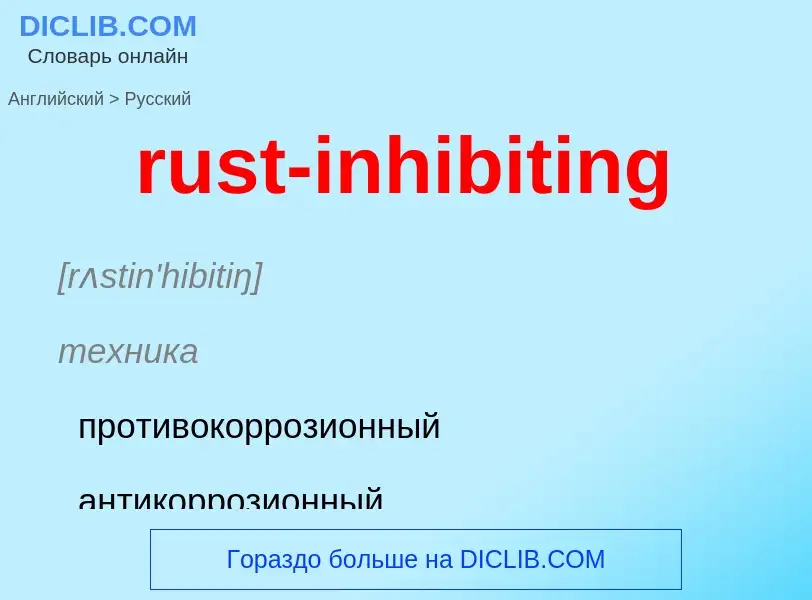Traduzione e analisi delle parole tramite l'intelligenza artificiale ChatGPT
In questa pagina puoi ottenere un'analisi dettagliata di una parola o frase, prodotta utilizzando la migliore tecnologia di intelligenza artificiale fino ad oggi:
- come viene usata la parola
- frequenza di utilizzo
- è usato più spesso nel discorso orale o scritto
- opzioni di traduzione delle parole
- esempi di utilizzo (varie frasi con traduzione)
- etimologia
rust-inhibiting - traduzione in russo
[rʌstin'hibitiŋ]
техника
противокоррозионный
антикоррозионный
прилагательное
техника
противокоррозионный
антикоррозионный
общая лексика
серянка сосны веймутовой и кедра сибирского (возбудитель - гриб Cronartium ribicola)
общая лексика
ржавчинные грибы (Uredinales)
Wikipedia
.jpg?width=120)
Rusts are plant diseases caused by pathogenic fungi of the order Pucciniales (previously known as Uredinales).
An estimated 168 rust genera and approximately 7,000 species, more than half of which belong to the genus Puccinia, are currently accepted. Rust fungi are highly specialized plant pathogens with several unique features. Taken as a group, rust fungi are diverse and affect many kinds of plants. However, each species has a very narrow range of hosts and cannot be transmitted to non-host plants. In addition, most rust fungi cannot be grown easily in pure culture.
A single species of rust fungi may be able to infect two different plant hosts in different stages of its life cycle, and may produce up to five morphologically and cytologically distinct spore-producing structures viz., spermogonia, aecia, uredinia, telia, and basidia in successive stages of reproduction. Each spore type is very host specific, and can typically infect only one kind of plant.
Rust fungi are obligate plant pathogens that only infect living plants. Infections begin when a spore lands on the plant surface, germinates, and invades its host. Infection is limited to plant parts such as leaves, petioles, tender shoots, stem, fruits, etc. Plants with severe rust infection may appear stunted, chlorotic (yellowed), or may display signs of infection such as rust fruiting bodies. Rust fungi grow intracellularly, and make spore-producing fruiting bodies within or, more often, on the surfaces of affected plant parts. Some rust species form perennial systemic infections that may cause plant deformities such as growth retardation, witch's broom, stem canker, galls, or hypertrophy of affected plant parts.
Rusts get their name because they are most commonly observed as deposits of powdery rust-coloured or brown spores on plant surfaces. The Roman agricultural festival Robigalia (April 25) has ancient origins in combating wheat rust.

.jpg?width=200)
![Germinating urediniospore of ''[[Puccinia graminis]]'', model from the late 19th century, [[Botanical Museum Greifswald]] Germinating urediniospore of ''[[Puccinia graminis]]'', model from the late 19th century, [[Botanical Museum Greifswald]]](https://commons.wikimedia.org/wiki/Special:FilePath/Modell von Puccinia graminis (Getreiderost) -Osterloh- -Brendel 10 h, 2-.jpg?width=200)
 Pengo.jpg?width=200)
 pustules of urediniospores Pengo.jpg?width=200)

